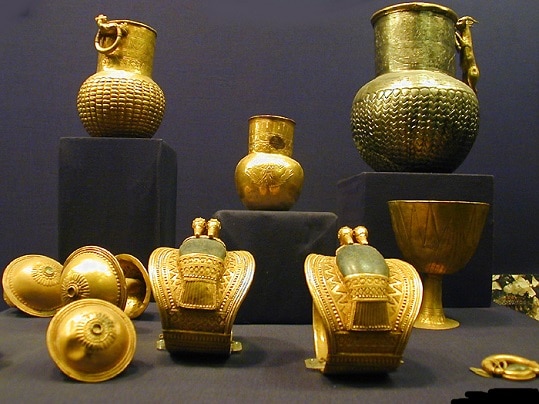In ancient times, Egypt it was one of the richest countries on Earth. In addition to the huge monuments and large temple complexes, the Egyptians displayed the wealth of society through jewelry.
The creations of ancient Egyptian jewelers were incredibly complex and still cause awe among scholars and museum visitors alike every year.
Meaning
For Egypt, the acquisition of precious metals was a matter of national pride. In upper and lower Egypt, there was very little gold and no electrum (a natural alloy of gold and silver), but semi-precious stones are readily available.
For gold, Egypt first traded with Nubia to the south, but eventually went to war and conquering the 'land of gold', as Nubia was called. Upper-class Egyptians also benefited from the expansion of Egypt's repertoire of precious materials.
So, the Jewelry took a variety of forms and served a wide range of functions, from the status screen to ward off the wrath of evil spirits or the wrath of the gods. Jewelry was so important that not only the Egyptian pharaohs, but they were all buried with some type of jewelry - even if it was only bronze and glass.
PREMIUM QUALITY
As in modern society, the ancient Egyptians crafted a wide range of jewelry, including bracelets, earrings, necklaces, anklets, and rings. Above all, these items are used to show the wealth and position of the wearer, the more intricate the piece, the richer the wearer was.
Egyptian jewelers became skilled craftsmen with an eye for exquisite detail. For example, a gold bracelet in the British Museum (see Resources below) is made up of two bands of beaten gold linked with highly detailed silver and gold charms depicting animals, pillars, and ankhs. In the Egyptian Museum, the bracelets of Ramses II depict two heads of geese or swans with lapis lazuli bellies.
Function
Besides establishing the position of the person in sight, the jewelry also played magical or supernatural roles. The bracelet described above is considered by scholars to ward off evil, protect fertility, protect against disease, renew life, and to invoke the blessings of Horus, Hathor, and other gods and goddesses.
A common motif in Egyptian jewelry was also the scarab, which was a protector of secrets as well as a symbol of rebirth (because the scarab was believed to push the sun into the sky every morning). Another common symbol was the ankh, the "key of life", called that protected the life of the user and will preserve from evil and darkness.
